Art World
The Stand-Out Art Essays From 2016
On color photography, the #lovehustle of art, and how to wear your backpack.

1. “Color Goes Electric,” by Claire Lehmann, Triple Canopy, May 31, 2016An outstandingly entertaining, erudite trip through the history of color photography as technology and as art. As a bonus, it delivers nicely on Triple Canopy’s unique digital magazine format.
Key passage:
[Kodak researcher C. James] Bartleson found that test subjects consistently remembered the saturation of familiar colors with exaggerated intensity, or to be “more characteristic of the dominant chromatic attribute of the object in question.” In other words, “grass was more green, bricks more red.” Rather than increasing accuracy, our familiarity breeds a kind of mnemonic distortion. And because most people consider themselves quite capable of judging the colors in photographs “taken by people other than themselves, of objects that they have never seen, at times when they were not present,” as the scientist R. W. G. Hunt puts it, the crucial industrial mandate in photographic color reproduction is accordance with memory, not reality. Thus the technologies that record our memories have been materially imbued with memory’s subtle alterations.
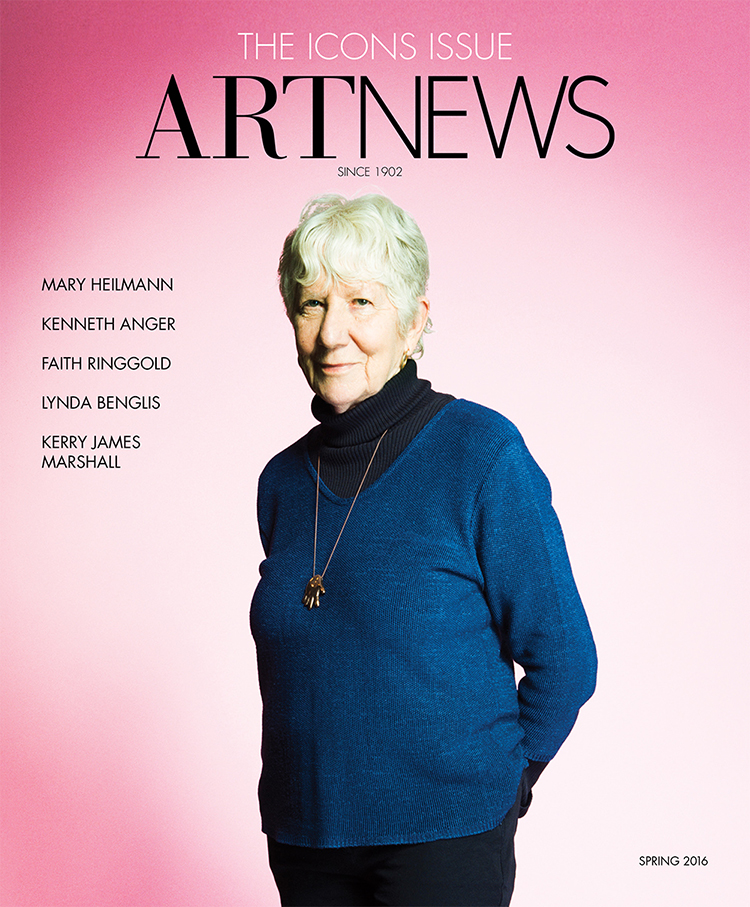
Artnews, Spring 2016.
2. “Go Pro: The Hyper-Professionalization of the Emerging Artist,” by Daniel S. Palmer, Artnews, March 9, 2016Starting from an account of a studio visit gone wrong, Palmer, an art historian and curator, painted a picture of the state of contemporary art that immediately became the go-to reference for discussions of the scene’s soullessness.
Key passage:
The entire system seems designed, predominantly, to disappoint. What has arisen from these failures is a marked distinction between product- and project-based artists. Product-based artists have been led to think of an artwork as a product serving a demand, rather than a single step in a longer, sustained development, as is the case with project-based artists.
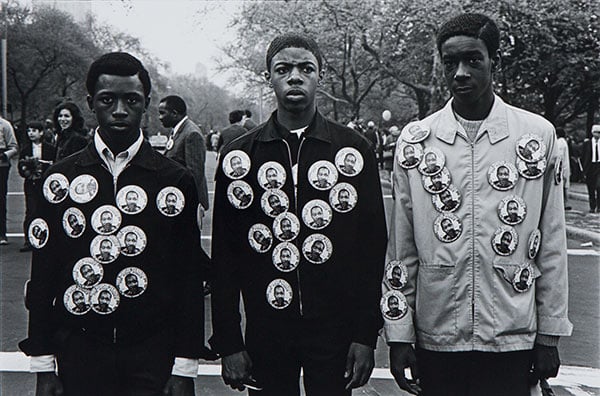
Benedict Fernandez, Memorial to Martin Luther King, Jr., Central Park, New York, 1968. Courtesy Harvard Art Museums/Fogg Museum.
3. “Vision & Justice: Guest Editor’s Note,” by Sarah Lewis, Aperture, Summer 2016
I place this essay here as standing for the entire, Lewis-edited Aperture issue on photography and the black experience, which features a formidable list of contributors ranging from Henry Louis Gates, Jr. to Ava DuVernay. Still, Lewis’s assured lead-in centers the discussion of the role that images has played in the history of struggles for racial justice.
I place this essay here as standing for the entire, Lewis-edited Aperture issue on photography and the black experience, which features a formidable list of contributors ranging from Henry Louis Gates, Jr. to Ava DuVernay. Still, Lewis’s assured lead-in centers the discussion of the role that images has played in the history of struggles for racial justice.
Key passage:
The gravity of this connection between vision and justice is crucial to understand, as we live in a polarized climate in the United States; sociologists tell us that people now congregate, live, worship, play, and learn with those like themselves more than ever before. Save for constructed societies, we come into close contact with those who do not share our political and religious views less and less. How we remain connected depends on the function of pictures—increasingly the way that we process worlds unlike our own. The tool we marshal to cross our gulf is irrevocably altered vision. The imagination inspired by aesthetic encounters can get us to the point of benevolent surrender, making way for a new version of our collective selves.
4. “Gallery Guide Rant: Wear Your Backpack on the Front and Don’t Be a Jerk,” by Kate Rhoades, ArtSlant/Arts.Black, July 18
Here’s a fun one: Rhoades, an artist, reflects on her time as a museum “gallery guide,” and the very unglamorous realities of being on the museum floor day in, day out.
Here’s a fun one: Rhoades, an artist, reflects on her time as a museum “gallery guide,” and the very unglamorous realities of being on the museum floor day in, day out.
Key passage:
That day I saw a child beat a painting with both hands as if he were playing a bongo drum. Children climbed up on plinths and tried to rip headphones out of the interactive displays. It was pandemonium.
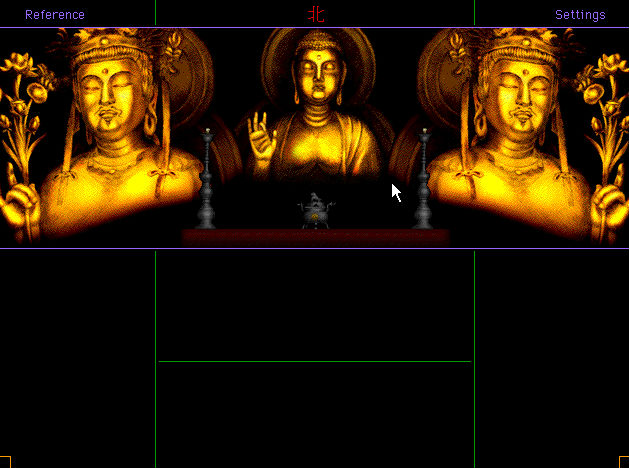
Screen capture from Cosmology of Kyoto.
5. “Towards an Art History for Videogames,” by Lana Polansky, Rhizome.org, August 3
A great foundation for some ambitious institution to put together a really cool show: Polansky walks readers through some of the weirder early artifacts of gaming, from the psychedelic J.J. Squawkers to the unsettling-sounding Cosmology of Kyoto, convincingly making the case that art doesn’t need to redeem the medium because there has always been a strand of game that represents all the weird and quirky values we associate with art.
A great foundation for some ambitious institution to put together a really cool show: Polansky walks readers through some of the weirder early artifacts of gaming, from the psychedelic J.J. Squawkers to the unsettling-sounding Cosmology of Kyoto, convincingly making the case that art doesn’t need to redeem the medium because there has always been a strand of game that represents all the weird and quirky values we associate with art.
Key passage:
It seems surprising to say that the idea of the “artgame” goes back to at least the early 2000s, and that such works were being exhibited in spaces like the MASS MoCA. It seems even more surprising, given the hardened assumptions of the culture, that, as developer G.P. Lackey put it, “Artgames are as old as games!”
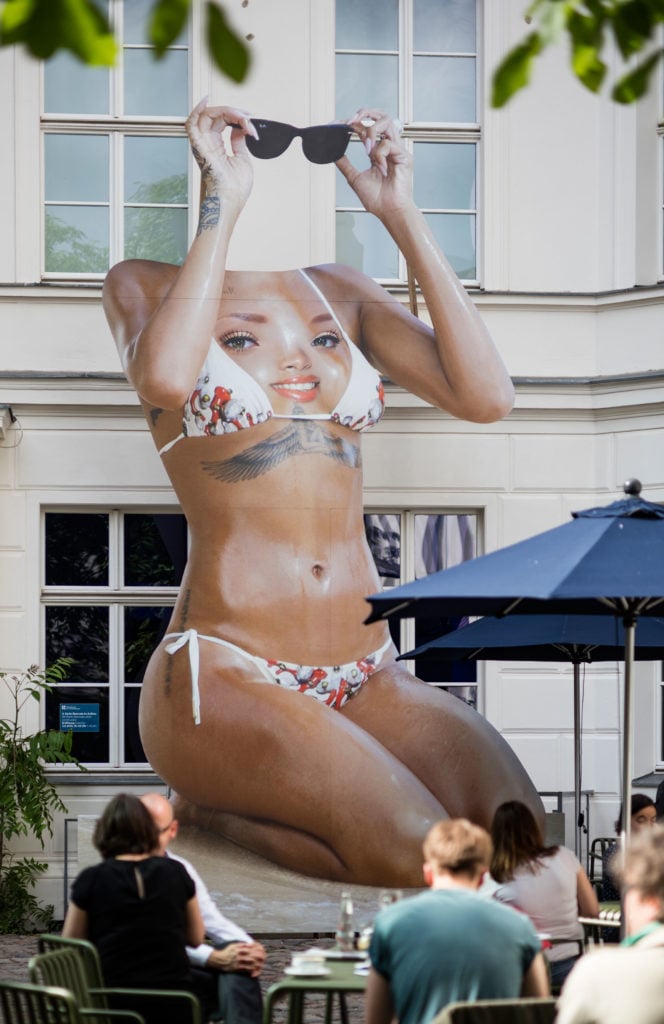
Installation view of “Ewaipanoma (Rihanna),” 2016, courtesy Juan Sebastián Peláez, photo: Timo Ohler.
6. “9th Berlin Biennial Review,” by Hannah Black, Artforum, September 2016
Jason Farago’s savage takedown of the DIS-curated Berlin Biennial in the Guardian became the reference point for most later takes on the event, pro and contra, but Black’s review stands out as one of the most admired pieces of analysis (Kareem Estefan called it an example of “reparative criticism”), sensitive to the distinctive vision of the event, while also naming its blind spots.
Jason Farago’s savage takedown of the DIS-curated Berlin Biennial in the Guardian became the reference point for most later takes on the event, pro and contra, but Black’s review stands out as one of the most admired pieces of analysis (Kareem Estefan called it an example of “reparative criticism”), sensitive to the distinctive vision of the event, while also naming its blind spots.
Key passage:
The show has been pummeled by critics for its vacuity and cynicism, but in fact it comes across as relentlessly anxious about the conditions and possibilities of art and life. Taken together, the works on view express the despairing atomization, and the compromised longing for solidarity, of a postbourgeois creative class hovering on the brink of its own obsolescence. The paradigmatic racial and class position of this despair goes without saying.
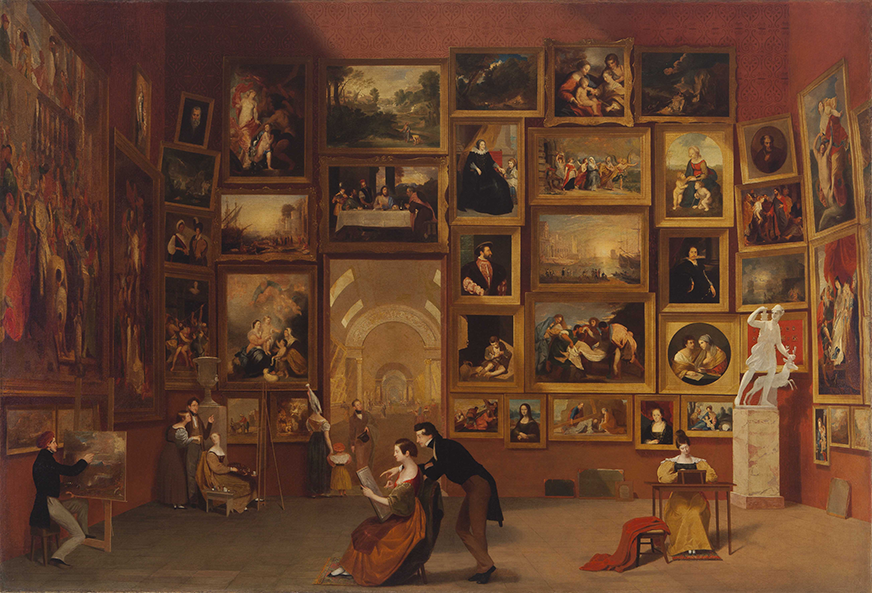
Samuel F. B. Morse, Gallery of the Louvre (1831–33), Terra Foundation for American Art.
7. “Unknown Makers,” by Alexander Provan, Art in America, October 2016
From Art in America’s very useful issue on the “digital museum,” Provan’s essay relating the art institution’s changing contemporary relationship to ideas of originality goes so far beyond the conventional discussion of “aura” and “mechanical reproducibility,” via copious art history, examples of contemporary practice, and discussion of legal precedent, that it makes most other discussion of the subject look embarrassing.
From Art in America’s very useful issue on the “digital museum,” Provan’s essay relating the art institution’s changing contemporary relationship to ideas of originality goes so far beyond the conventional discussion of “aura” and “mechanical reproducibility,” via copious art history, examples of contemporary practice, and discussion of legal precedent, that it makes most other discussion of the subject look embarrassing.
Key passage:
What might be lost as the greatest hits of human civilization are safely transferred to hard drives? The passage of centuries registered in the fissuring of the supple flesh and glinting pool of Courbet’s The Source; our sense of ourselves as stewards of objects that testify to our histories and capabilities, given that everything can so simply be stored and retrieved.
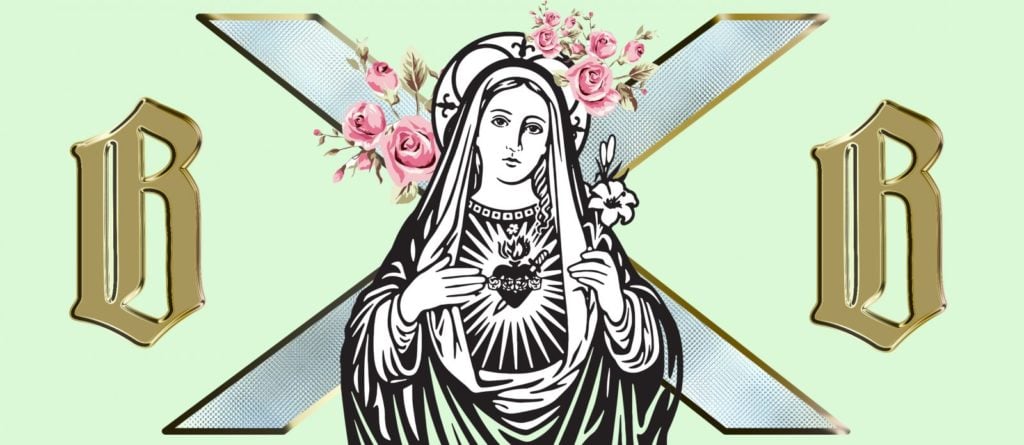
Image for “Brouhaha” at Recess.
8. “Get In Where You Can Fit In,” by Danielle Jackson, Recess, December 2016
Written as an accompaniment to the New York art space Recess’s “Brouhaha” show (featuring artist Željka Blakšić and feminist collective Brujas), Jackson’s time capsule is the perfect companion piece to Daniel Palmer’s “Go Pro” essay, above. With a perspective radiating out from the Bronx (Jackson is co-founder of the Bronx Documentary Center), the essay economically captures the strains and compromises of the #lovehustle of creative labor in 2016 New York.
Written as an accompaniment to the New York art space Recess’s “Brouhaha” show (featuring artist Željka Blakšić and feminist collective Brujas), Jackson’s time capsule is the perfect companion piece to Daniel Palmer’s “Go Pro” essay, above. With a perspective radiating out from the Bronx (Jackson is co-founder of the Bronx Documentary Center), the essay economically captures the strains and compromises of the #lovehustle of creative labor in 2016 New York.
Key passage:
For a few weeks every artist I speak to is running to class. Caroline teaches four and we attempt to find a snatch of time in between, Sai’s filmmaking students are waiting for him down the block, Mike is heading to Columbia and has to cut our conversation short, and Zeljka has to go right now—her class at Cooper Union starts in twenty minutes.Teaching is appealing for any number of reasons: the satisfaction that comes with transferring knowledge, access to an engaging intellectual community, the sense of purpose conferred on to the instructor. The flexible schedule.Still, the promise of more time can feel illusory. Of dance classes and grantwriting a choreographer told me, “If I could only tell you how much time I spend doing the work that allows me to do the work.”

Interviewees from Human Rights Watch’s “Migrant Workers’ Rights on Saadiyat Island in the United Arab Emirates: 2015 Progress Report”
9. “The Loneliness of the Long-Distance Campaign: On Gulf Labor and Western Museums in the Middle East,” by Naeem Mohaiemen (text) and Hans Haacke (photos), Walker Art Center Magazine, December 7, 2016
Mohaiemen offers a sober and human account of the ins-and-outs of the artist-led campaign to make Abu Dhabi’s Guggenheim project deliver on its commitments to workers rights. In a year characterized by the rise of the New Artistic Activism (see Not An Alternative’s manifesto on “Institutional Liberation” from e-Flux Journal), he gives a sense of what a serious campaign really takes: An unglamorous familiarity with bureaucracy, and a commitment to strategy that transcends single, spectacular protests. The accompanying documentary photos by the legendary Haacke don’t hurt in lending it authority, either.
Mohaiemen offers a sober and human account of the ins-and-outs of the artist-led campaign to make Abu Dhabi’s Guggenheim project deliver on its commitments to workers rights. In a year characterized by the rise of the New Artistic Activism (see Not An Alternative’s manifesto on “Institutional Liberation” from e-Flux Journal), he gives a sense of what a serious campaign really takes: An unglamorous familiarity with bureaucracy, and a commitment to strategy that transcends single, spectacular protests. The accompanying documentary photos by the legendary Haacke don’t hurt in lending it authority, either.
Key passage:
Follow artnet News on Facebook.One of the radical moves artists can make is to challenge the conditions under which institutions exhibit their work. But why do such tangible demands get bracketed as posturing, while metaphoric confrontations are celebrated? Defiance is welcomed when it is sanctioned and staged as art. Drill a crater in the floor, flood a gallery, embalm an animal, smash an object, stage a pitiful death—critics hail these gestures as having the power to “shape worlds.” But when artists sit down at a conference table with museum administrators and read from a list of demands for labor rights, this work—involving conversation, negotiation, research, protest—suddenly becomes illegible to the same museum. The artists whose projects were previously praised as stretching boundaries are now tagged as maverick spoilers.
SHARE
Article topics

No comments:
Post a Comment